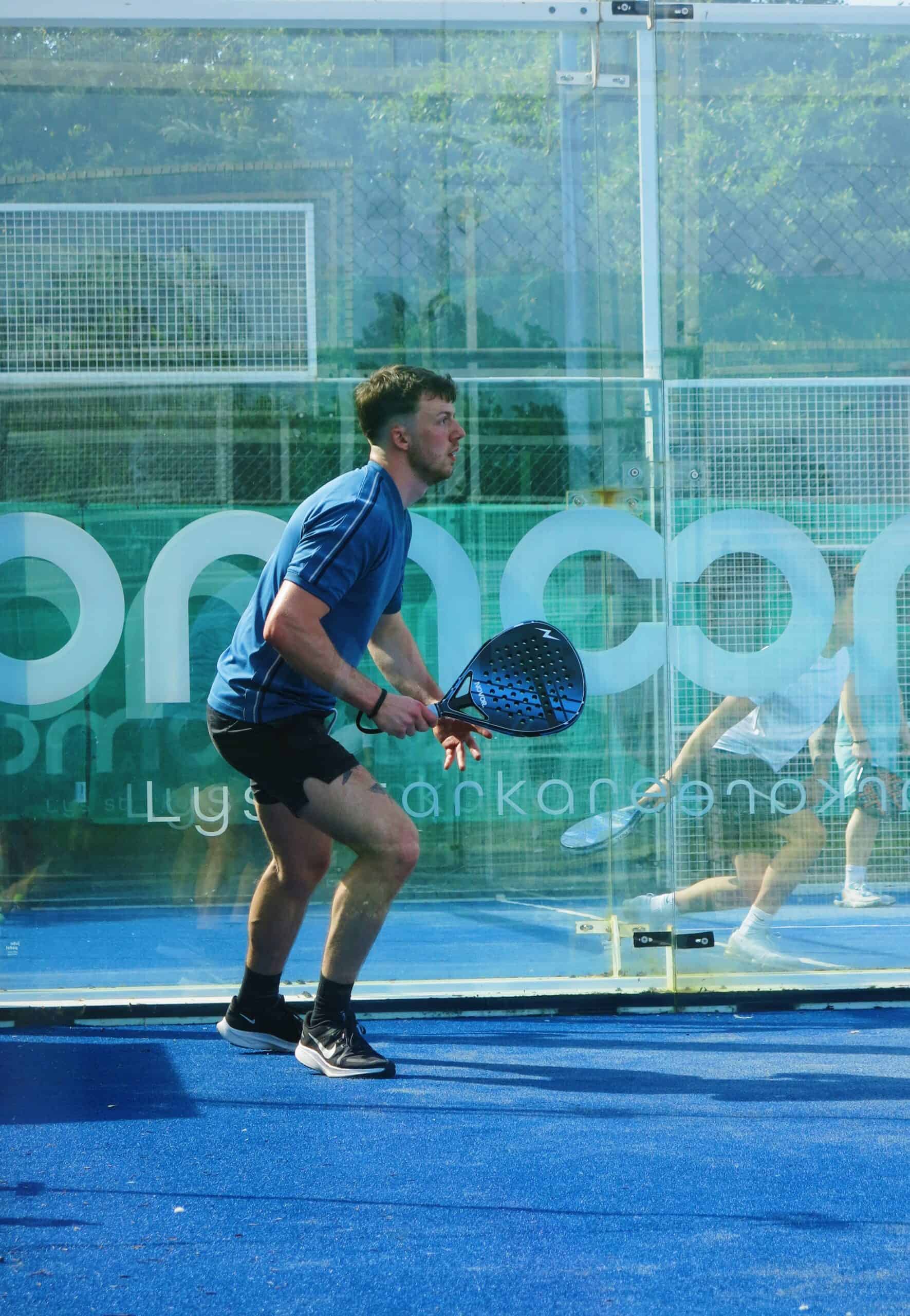
When it comes to sports and their impact on our bodies, the impact on joint health weighs heavily on the player. Recently in the UK, padel tennis has emerged as an appealing alternative to tennis, gaining traction not just for its exciting gameplay but also for its purported benefits to bone and joint health. Understanding the differences between padel and tennis sheds light on why many players are making the transition to padel, finding it to be a more joint friendly option.
Padel, a racket sport that combines elements of tennis and squash, is distinguished by its smaller court size and the use of solid walls around the playing area. The compact court in padel naturally influences the playing style, leading to shorter, less demanding movements compared to tennis. The reduced court dimensions mean less ground to cover, resulting in shorter sprints and less impactful movements on joints.
Conversely, tennis involves more expansive court dimensions, demanding frequent and rapid lateral movements, quick acceleration, and abrupt stopping. The repeated high impact movements in tennis put unnecessary stress on joints, potentially leading to injuries and long term issues over time.
Padel’s design significantly contributes to its gentler impact on bones and joints. The enclosed playing area with solid walls ensures that the ball remains in play longer, encouraging longer rallies but with less exertion. Additionally, the use of a specialised racket, typically lighter and easier to handle, aids in reducing strain on the arm and shoulder joints.

Several studies have explored the impact of various racket sports on joint health. A comparative study published in the Journal of Sports Sciences found that padel players experienced significantly fewer joint related injuries than their tennis counterparts. The study resulted this to the shorter, less demanding movements in padel, reducing the strain on joints and lowering the risk of injuries.
In addition to this, research in the Journal of Orthopaedic & Sports Physical Therapy suggests that padel’s enclosed court design contributes to a lower incidence of joint injuries compared to sports like tennis, which involve larger, open courts.
The evidence from both scientific studies and personal accounts defines the favourable impact of padel on bone and joint health compared to tennis. Its unique playing style, enclosed court design, and emphasis on strategy rather than power make padel a gentler alternative for individuals concerned about joint well being.
As more people recognise the benefits and experience firsthand the relief it offers to their joints, the popularity of padel continues to surge. The shift toward padel isn’t just a trend, it’s a conscious choice to safeguard joint health while enjoying an engaging and competitive sport.
In conclusion, padel emerges as the kinder option for bones and joints, providing a compelling reason for individuals to embrace this sport and contribute to its rapid growth.
Whether you’re a professional athlete or someone exploring new sporting avenues, prioritising joint health remains paramount. Padel stands as a testament to an enjoyable sport that not only offers competitive excitement but also cares for your body’s longevity and well being. So get involed today and join a padel community like Novor!
Managing Director
We’re dedicated to upholding the highest standards of customer service and delivering on providing premium padel rackets. Please explore our extensive list of reviews to see what our customers have to say!
Super, top quality gear and a super helpful team. Have definitely secured my future business. 🤩
I had the chance to try the Novor padel racket last weekend and I was very surprised with the quality, weight and it’s balance distribution. Very good relation price quality and highly recommended. Very good effort and work developing their first official product by the guys of Novor!
What a stunning racket. Very good price, especially for a carbon racket, delivered in 2 days, comes with a nice bag. Beautifully designed and made, looks the business and feels very nicely weighted. Can't fault it. I just need to get better at the game to justify having such a nice piece of kit!

Elevate your padel game with Novor – Precision | Power | Performance. Unleash your potential with our padel rackets designed in London.
VirtualRock Ltd trading as Novor (™) 2023 . All Rights Reserved